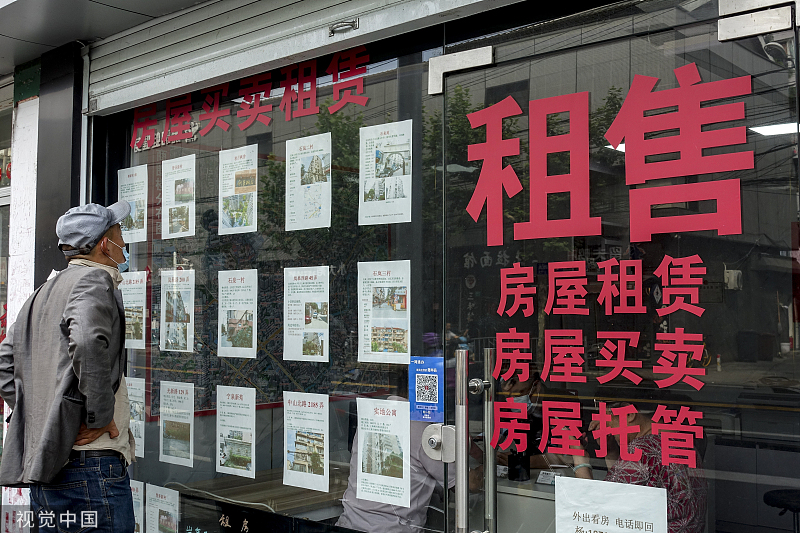How Chinese cities are transforming rental housing segment


In late January, China's social media platforms were agog with talk of the transformation of a makeshift hospital into apartments for talented professionals in Shandong province's capital Jinan. The development put the property industry's spotlight on the outlook for long-term rental apartments.
To help enterprises restore their operations to normalcy amid the continuing impact of the COVID-19 pandemic on the industry, and also solve employees' demand for decent accommodation, the Jinan Innovation Zone decided to transform the former Fangcang Shelter Hospital into flats for skilled professionals, the local Jinan Daily reported.
"Considering that China has entered a new phase of COVID-19 response, Jinan's practice has provided an option for revitalizing the temporary (hospital) projects, making them fit for residential use," said Yan Yuejin, director of Shanghai-based E-house China Research and Development Institution.
Yan said the development of the long-term rental housing sector can be sped up by making creative use of such makeshift hospitals that are no longer being used for medical purposes. Most of such facilities were built in suburban areas, usually close to industrial parks.
The long-term rental apartment sector in China has experienced ups and downs in the past few years. Companies in this sector, some of which are even listed, experienced an industrial shake-up after the outbreak of COVID-19. The most discussed case was that of Beijing-based Danke Apartments, which was delisted by the New York Stock Exchange in 2021.
But sustained supportive measures for the rental housing market through 2022 sought to meet the challenge of providing decent accommodation for in-demand skilled professionals.
Such steps started to show positive effects last September. The Beijing Municipal Commission of Housing and Urban-Rural Development launched a slew of measures to protect tenants' rights and ensure lodgers enjoy equal treatment in welfare, education and public services.
Similarly, Shanghai introduced new supportive policies. The city relaxed certain conditions and maximum housing provident fund withdrawal limits for rent payments. It also simplified the application process.
These new measures, along with previous policies such as increase in land supply, lower taxes, and support for corporate bond financing for the construction of guaranteed rental housing, will help meet the challenge of creating adequate housing for the employed, said Sheng Xiuxiu, residential sector research director at JLL China.
"These favorable policies are expected to further drive up demand for rental housing this year. While rental housing will become more attractive to young white-collar workers — they constitute the main tenant group for this emerging residential property segment — it will also attract more families and middle- to high-income tenants, among many other tenant types," said Sheng.
Considering the demographic structural shift in China's housing consumption demand and comprehensive government policy support, CBRE, a commercial real estate services and investment firm, said it expects to see China's number of multifamily rental apartments to increase to more than 12 million units by 2030.
"CBRE believes that the sector's strong leasing fundamentals and potential for asset liquidity will ensure multifamily house renting emerges as one of the most attractive commercial real estate investment asset classes in China in the next 10 years," said Xie Chen, head of research with CBRE China.
According to Xie, although there were an estimated 150 million people living in rented accommodation in China in 2020, the country's penetration rate of multifamily rental apartments remained below 2 percent.
With about three-quarters of China's target users living in Shanghai, Beijing and in the provinces of Guangdong, Zhejiang and Jiangsu, investors should target these core markets, or the China's three major city clusters — the Beijing-Tianjin-Hebei region, the Yangtze River Delta region and the Pearl River Delta region — Xie said.
In Shanghai, the total stock of the rental housing market reached 108,000 units in 2022, while the average occupancy rate ended the year at 86.3 percent. The city's total stock is expected to reach 189,000 units by the end of this year, according to Sheng.
The market has benefitted from the launch of higher-quality rental housing projects and continued improvement of amenities, such as fitness centers, study rooms and community centers, Sheng said.
With large-scale, high-quality projects featuring strong community atmosphere reaching the market, Shanghai's rental housing market saw resilient leasing demand through 2022.




































